The accompanying diagram represents a reversible cannot cycle for an ideal gas:
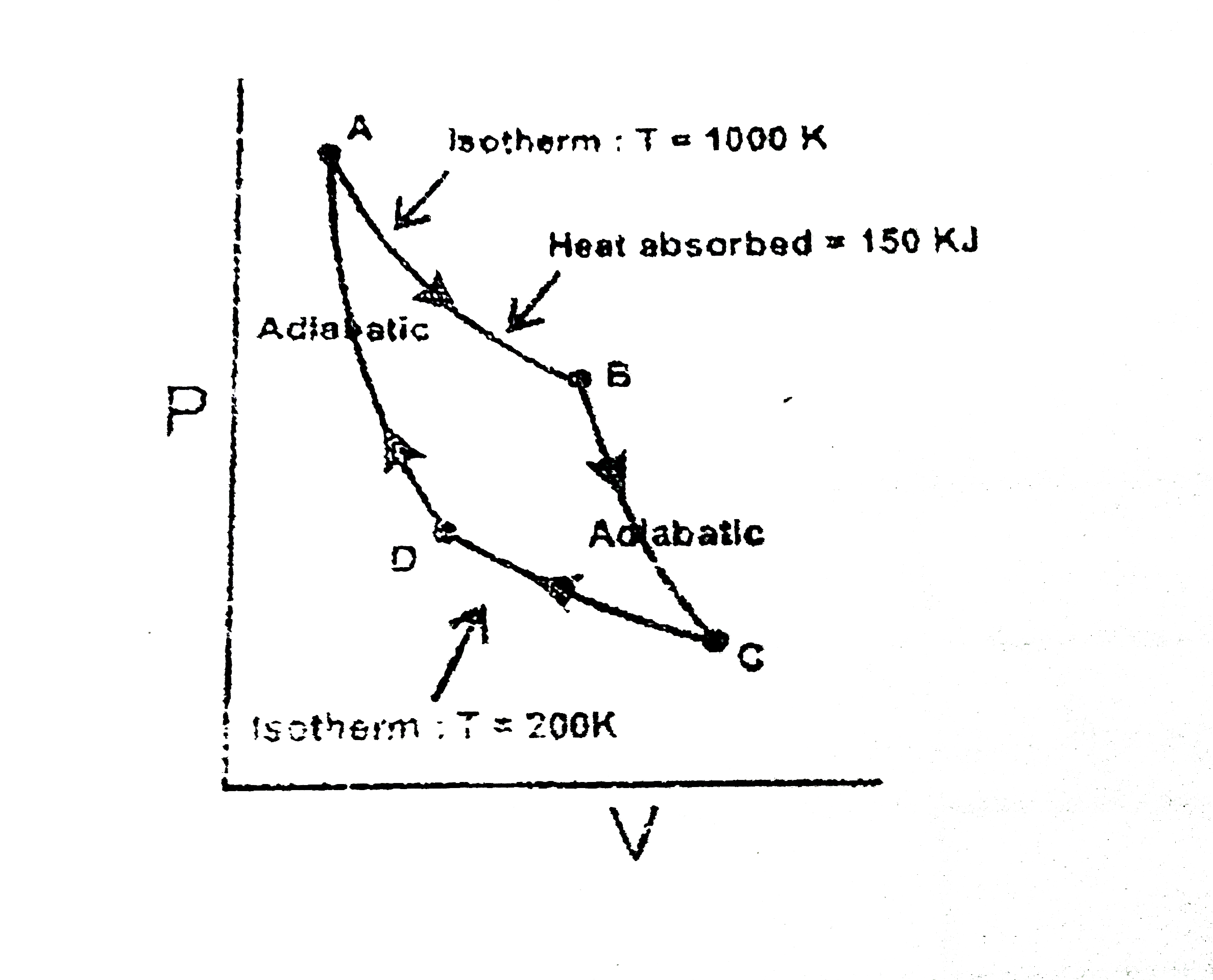
What is the Gibbs free energy change during the process ?
150 KJ
30 KJ
data are not sufficient
The correct Answer is:B
Topper's Solved these Questions
- THERMODYNAMICSBOOK - RESONANCECHAPTER - THERMODYNAMICSEXERCISE - exercise-3 part-III Advanced level Solutions (STAGE-I)
6 Videos
- THERMODYNAMICSBOOK - RESONANCECHAPTER - THERMODYNAMICSEXERCISE - exercise-3 part-III Advanced level Solutions (STAGE-II)
45 Videos
- THERMODYNAMICSBOOK - RESONANCECHAPTER - THERMODYNAMICSEXERCISE - exercise-3 part-1 Advanced level Solutions
30 Videos
- TEST SERIESBOOK - RESONANCECHAPTER - TEST SERIESEXERCISE - CHEMISTRY
50 Videos
Similar Questions
Knowledge Check
The accompanying diagram represents a reversible cannot cycle for an ideal gas:
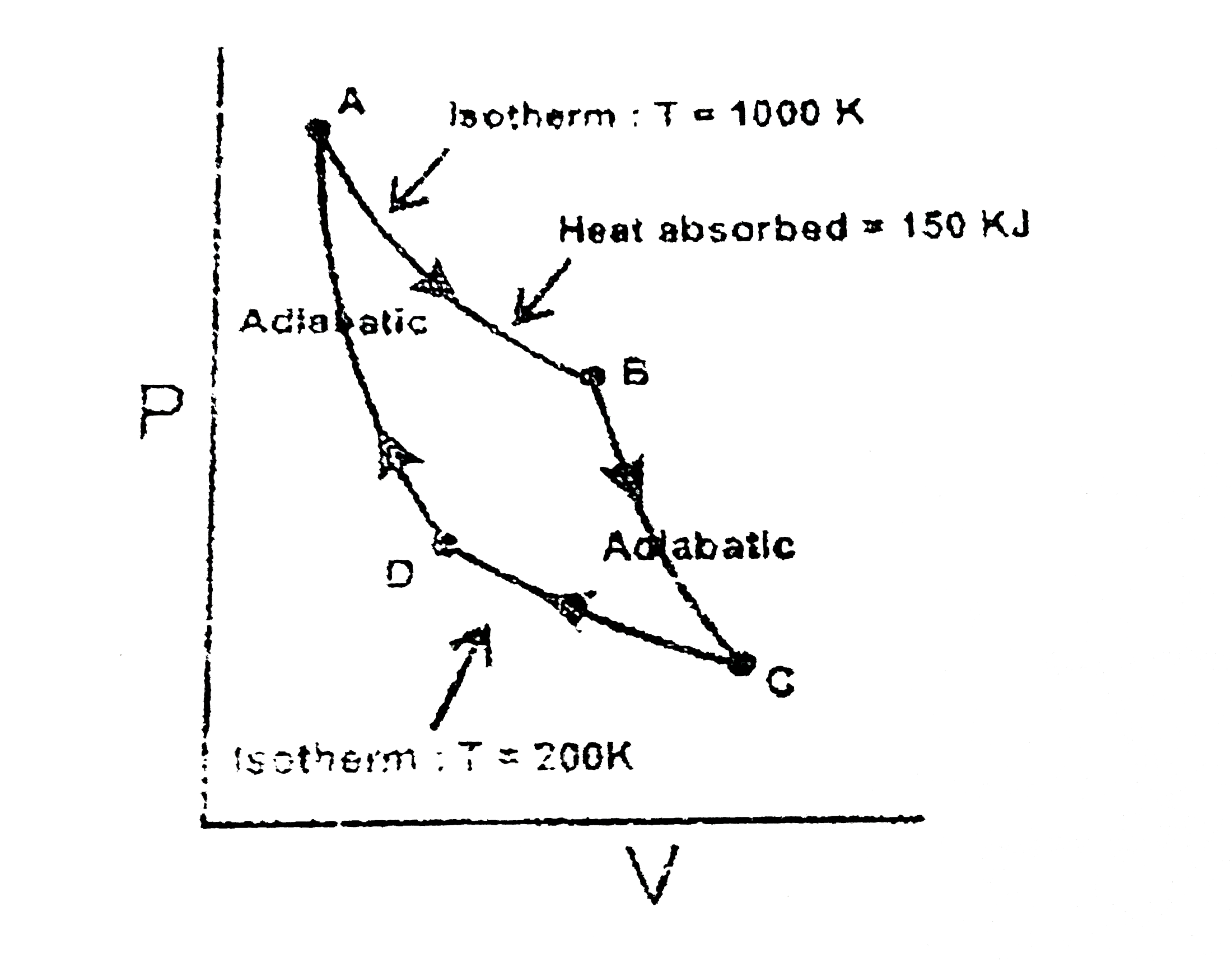
What is the entropy increase during isothermal at 1000K?A0.15KJ−1B150KJK−1C150JK−1D750JK−1The accompanying represents a reversible camot cycle for an ideal gas:
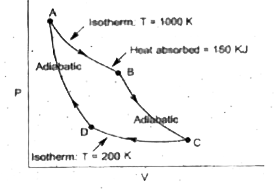
What is the entropy increase during isothemal expansion at 1000 K?A0.15JK−1B150JK−1C150JK−1D750JK−1The accompanying diagram represents a reversible cannot cycle for an ideal gas:
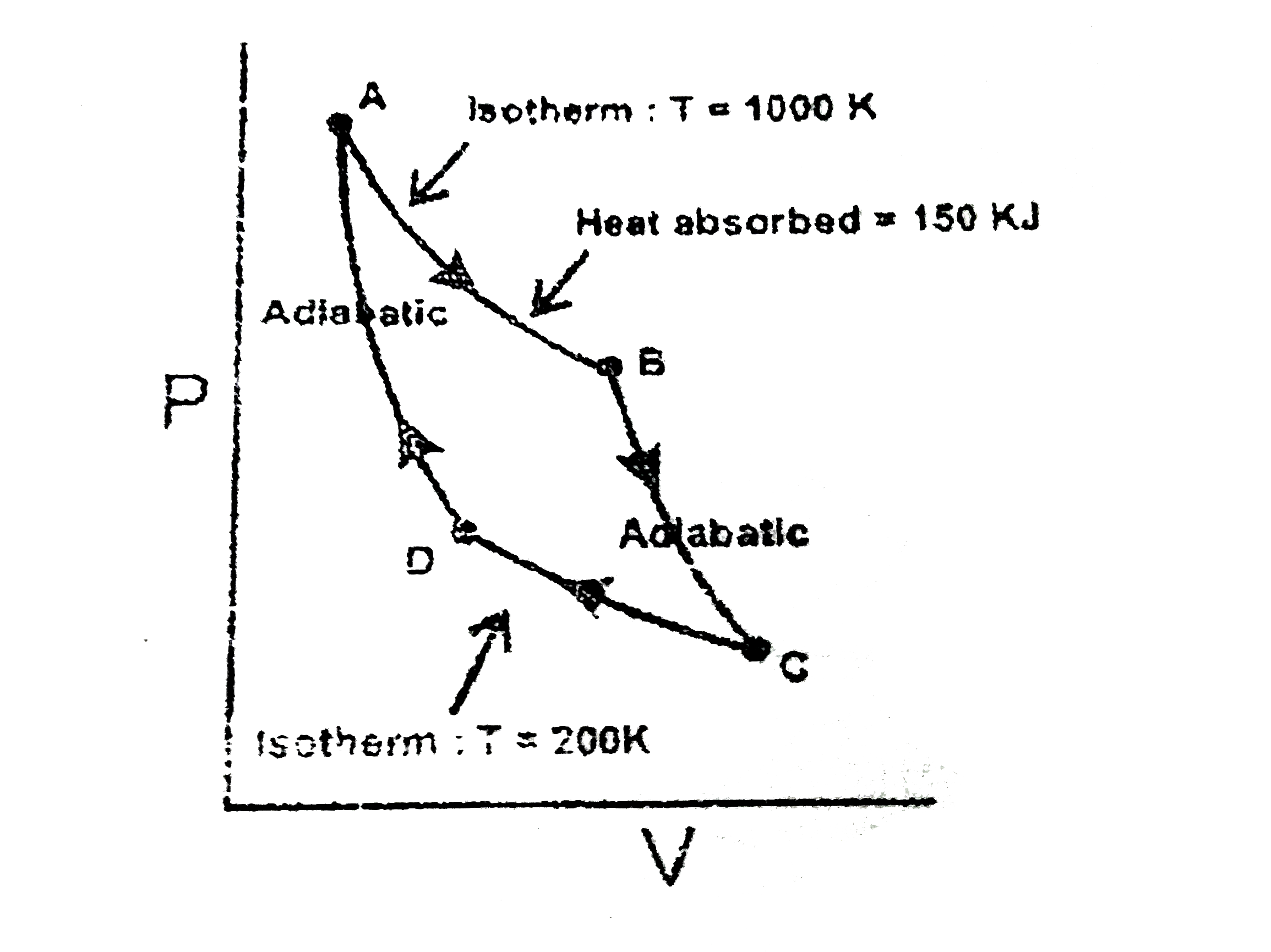
How many heat is rejected at the lower temperature, 200K, during the isothermal compression?A150 KJB30KJC120KJDdata are not sufficient to calculate exact value
The accompanying diagram represents a reversible cannot cycle for an ideal gas:

How many heat is rejected at the lower temperature, 200K, during the isothermal compression?
View SolutionFree energy change for a reversible process is
View SolutionThree processes compose a thermodynamic cycle shown in the accompanying P−V, diagram of an ideal gas.
Process 1→2 take place at constant temperature, during this process 60J of heat enters the system.
Process 2→3 takes place at constant volume. During this process 40J of heat leaves the system.
Process 3→1 is adiabatic.
What is the change in internal energy of the during process 3→1?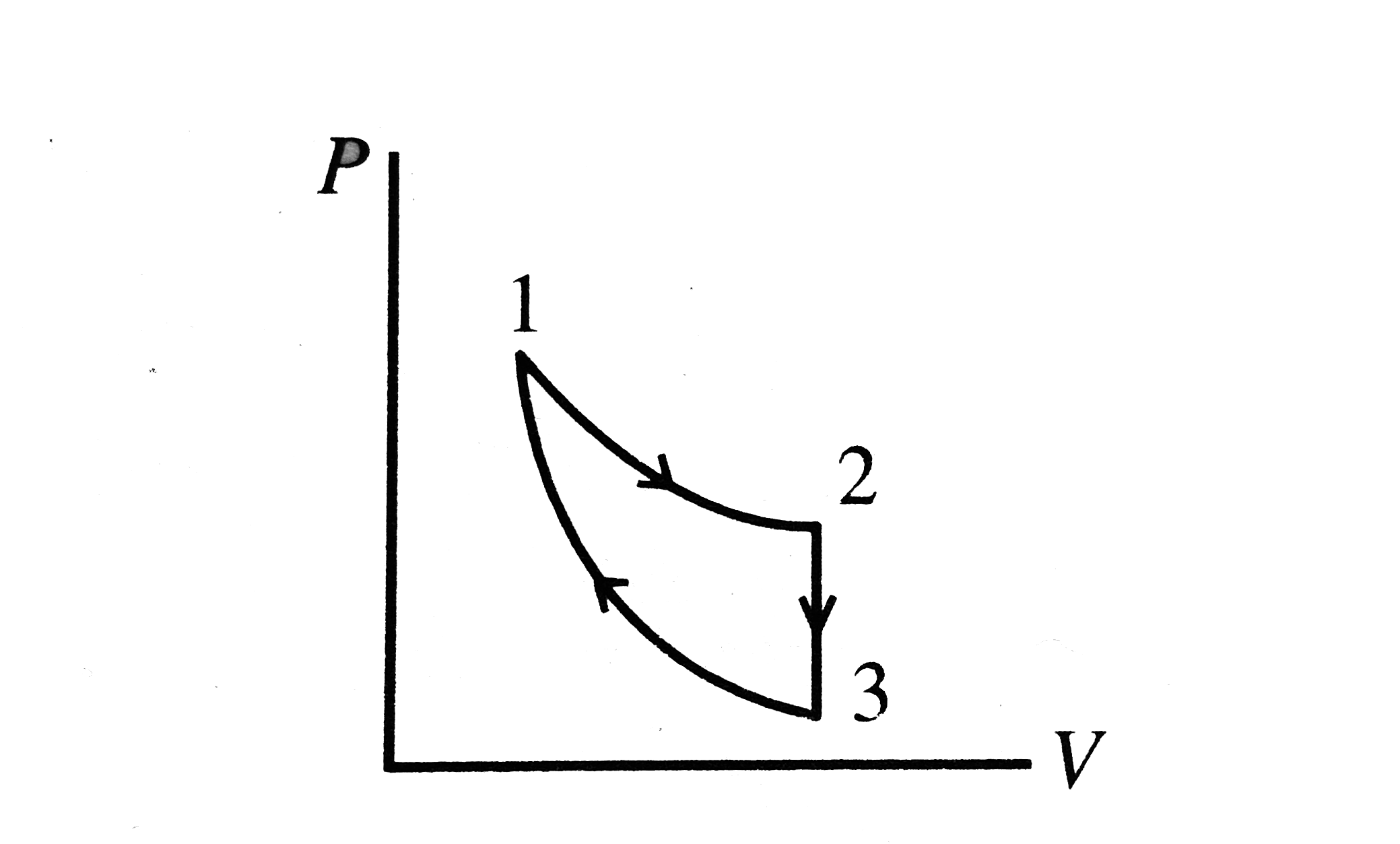
View SolutionChange in internal energy in an isothermal process for ideal gas is
View SolutionThe P−V diagram of 2 gm of helium gas for a certain process A→B is shown in the figure. What is the heat given to the gas during the process A→B?
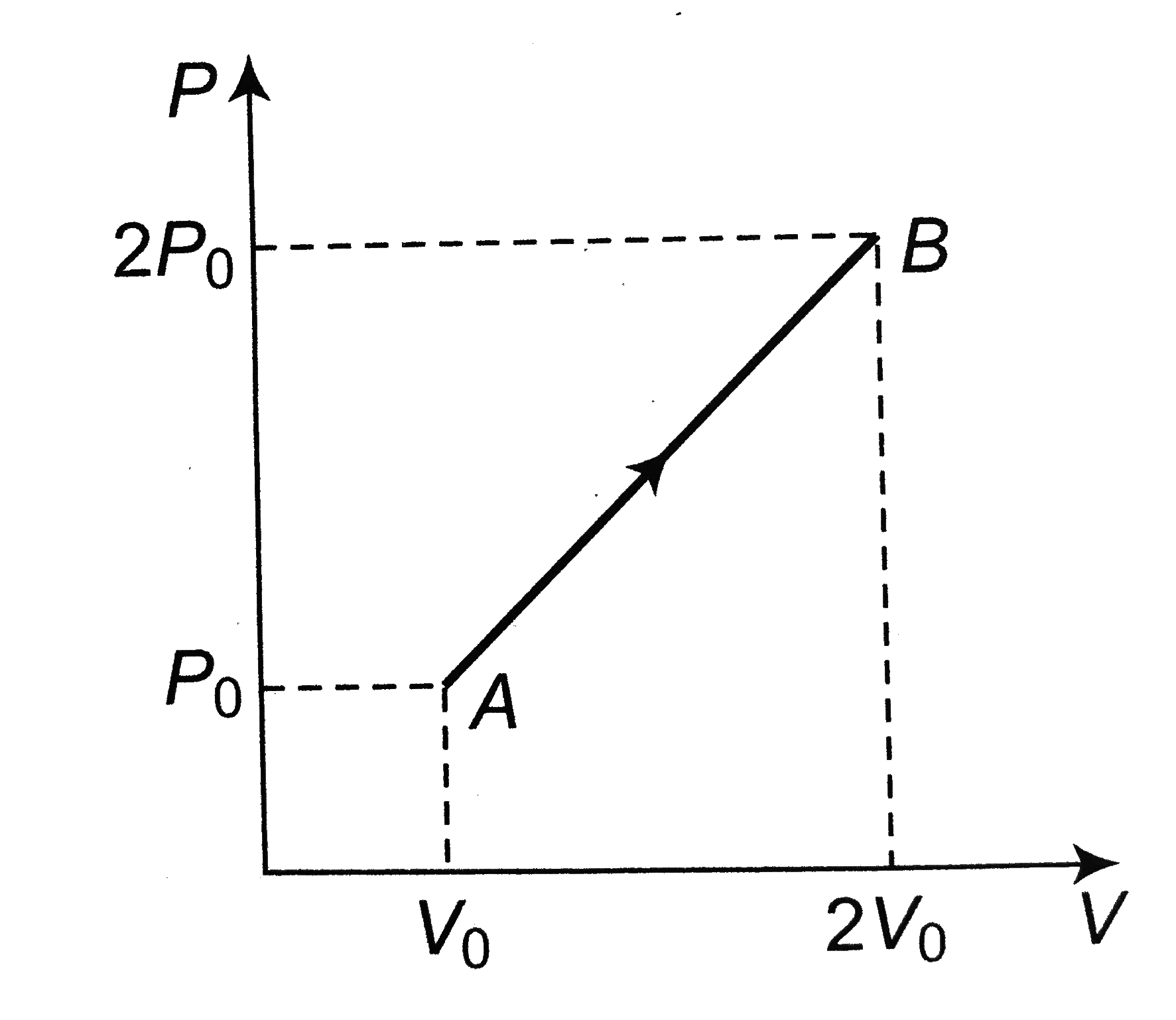
View Solution
